On a very cold January morning I was walking back home passing by Saint Mark’s Square. The air was crisp and against the greyish lead sky the contours of the two statues appeared sharp-edged in the light. I stopped, placed my heavy bags and took a few photos.
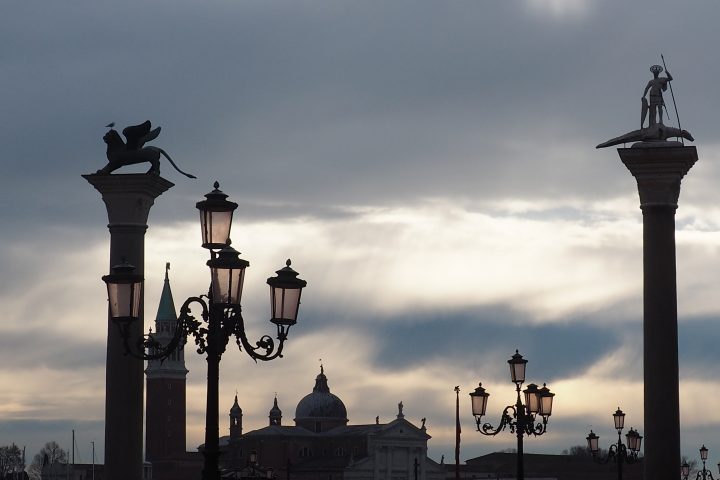
the 2 high columns
The light was so clear that all the details looked knife-cut against the sky.
SAINT THEODORE A DRAGON SLAYER
SAINT THEODORE THE RECRUIT
On the right stands a warrior with a spear and a dragon. Visitors believe he represents Saint George…
No, this is Saint Theodore (meaning the gift of God), the first patron saint of Venice.
Saint Theodore, the Recruit, was a saint and a martyr, a legionary of the Roman army and was martyred in Amasea, in Turkey nowadays, in the 4th century A.C.
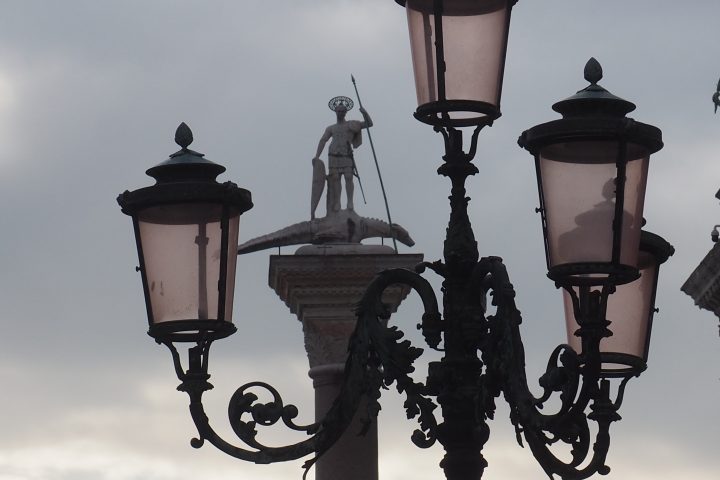
St. Theodore
SAINT THEODORE THE COMMANDER
In the Middle Ages he started being represented as a warrior saint and legends spread of battles fought against dragons, hence the iconography.
But, surprise, there is another St. Theodore, Theodore Stratelates (meaning the General or Military Commander) of Heraclea who also lived in the 4th century and who started being mentioned from the 9th century.
He lived in Asia; after having killed a serpent he became a commander, he refused to burn golden and silver statues to the heathen Gods, was tortured and finally beheaded.
Well, this statue is a copy. In 1948 the original statue was placed in the courtyard of the Doge’s palace cortile dei senatori where you still can admire him from very close.
The head in white marble was very likely brought from Docimium, in Turkey via Constantinople. The torso goes back to a Roman statue at the time of the emperor Adrian, the shield is made of Istrian stone, legs, arms and the body of the dragon in proconnesio, Marmora marble. The metal spear dates back to the Middle Ages.
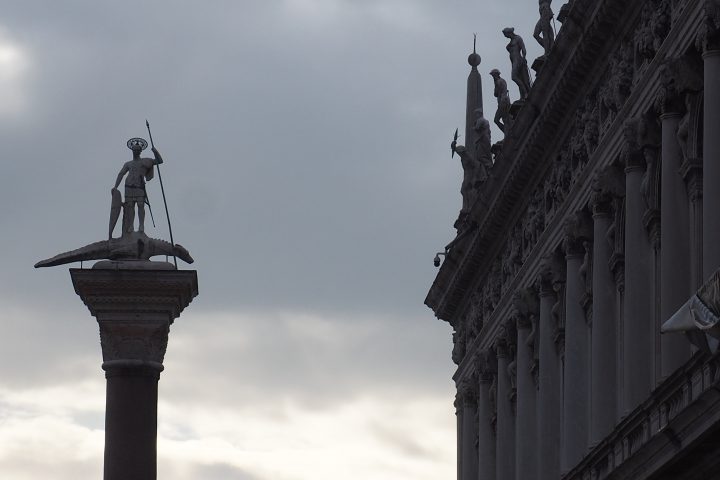
St. Theodore
A very nice Venetian patchwork indeed !
THE WINGED LION
And on the left a lovely bronze animal with a lovely mane with open jaws fitted to a winged lion resting on a lead book.
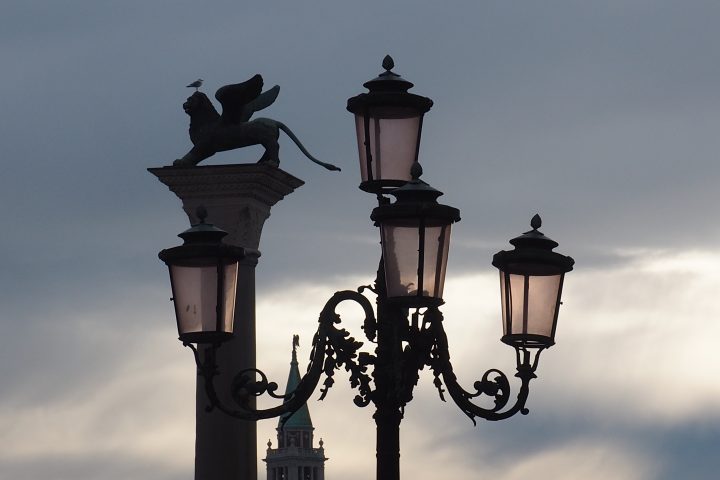
the winged lion
The lion became the symbol of Venice when Venetians smuggled the body of Mark the Evangelist out of Egypt and built here a church with his remains. So they needed a lion…
And from the Far East they brought in this marvellous creature. When at school I saw for the first time in a book the Etruscan Chimera of Arezzo, displayed in the Archeological Museum of Florence, this became in my mind his double, the Venetian chimera, a fire breathing creature: a lion with a goat’s head ending in a snake’s head.
The origins are still discussed, some suggest a Chinese Chimera. an Etruscan one or Sassanid art from Persia or Assyrian art.
This chimera was looted by the French, brought over to France, once back in Venice tail, wings and paws had to be restored, also the book in lead was redone.
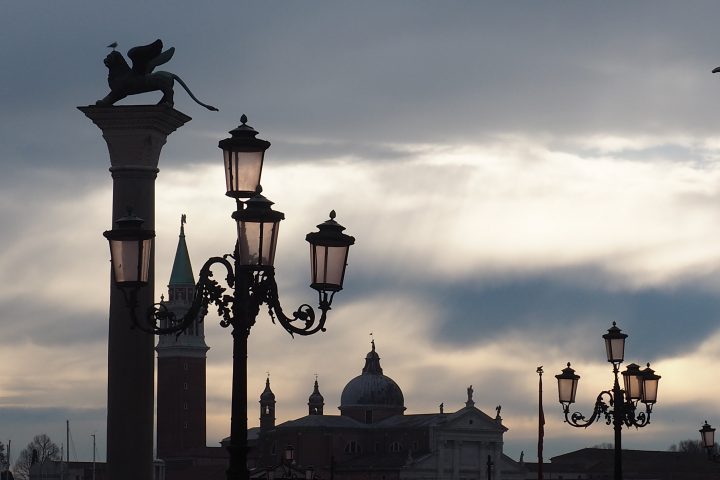
the winged lion
By the way some Venetians believe it brings ill luck if you walk in between as death executions were organized once there. But you cannot overlook them.
See you soon in front of the 2 columns and not in between.
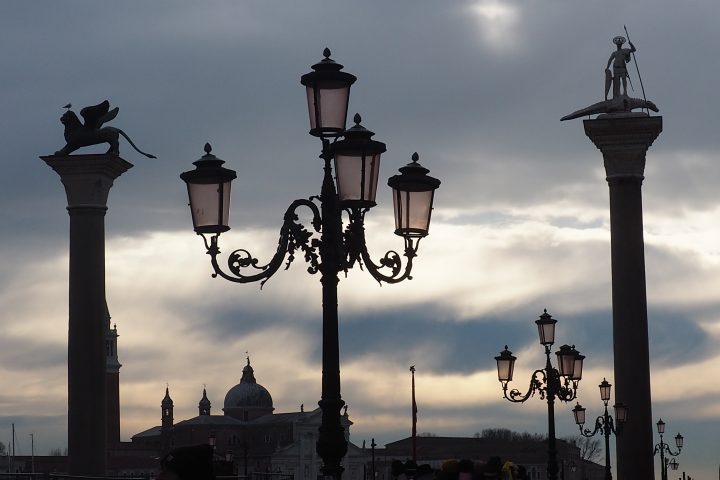
the 2 high columns
Then I will show you the nearly unrecognizable statues surviving at the basements and explain why St. Theodore is looking towards West while the lion East.
Fiona Giusto



